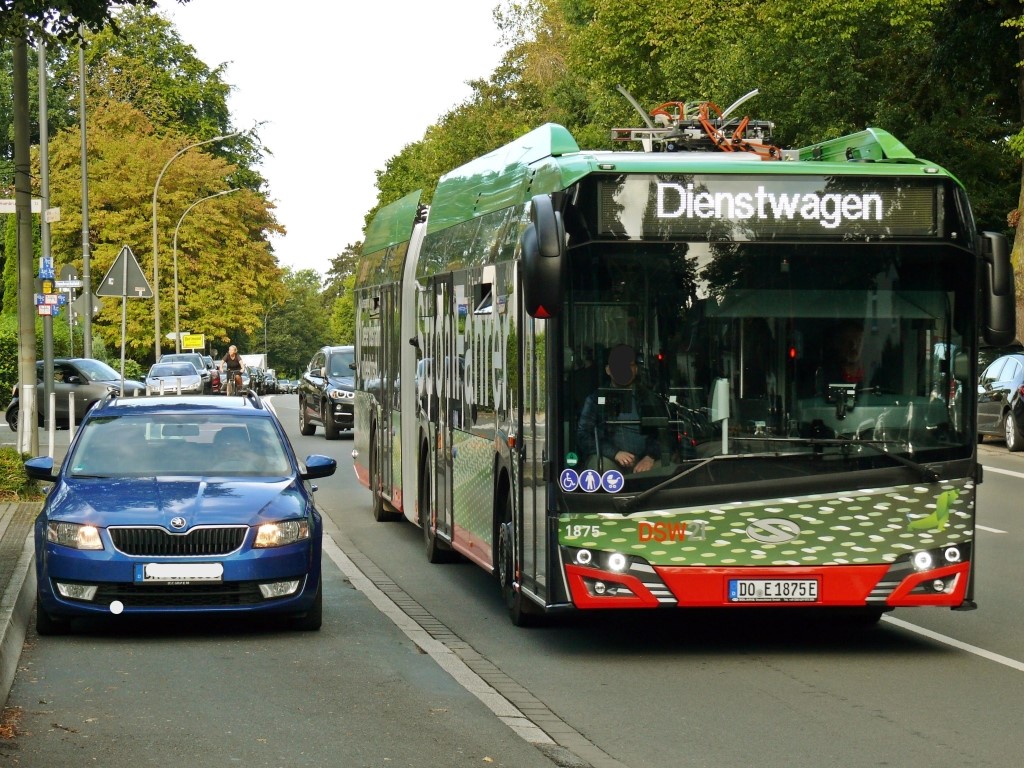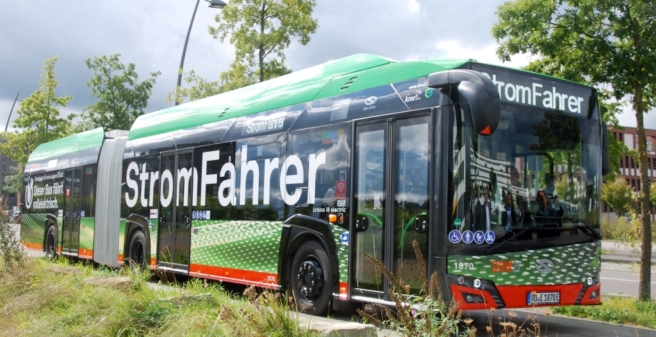
Patient waiting has paid off: on Friday, 22 September 2023, the first electric bus service in Dortmund finally started passenger operation. DSW21 operations manager Ralf Habbes: “We deliberately waited with our entry into electric mobility until the vehicles were ready for series production and guaranteed solid standards. This ensures that the electric buses are in no way inferior to their counterparts with combustion engines in terms of reliability and availability.”
In the end, the wait paid off. Because the first Solaris electric articulated bus of the “Urbino 18 electric” model was already delivered last November as bus 1842 (UTM reported on 29 November 2022). And then it stood still for a while, because the construction and expansion of the charging infrastructure at the bus depot Brünninghausen of the Dortmund public utility “DSW 21” did not progress: sometimes this required part was missing, sometimes that one … We all know about disrupted supply chains!
In the meantime, all 30 “Urbino 18 electric” trams ordered by the market leader Solaris have arrived in Dortmund. They now bear the numbers 1841 to 1845 and 1851 to 1875, are all green and have the name “StromFahrer” (written just like that). Meanwhile, driver training and familiarisation runs have been completed, and at noon on 22 September the buses went on their route(s) immediately after their presentation to the press.
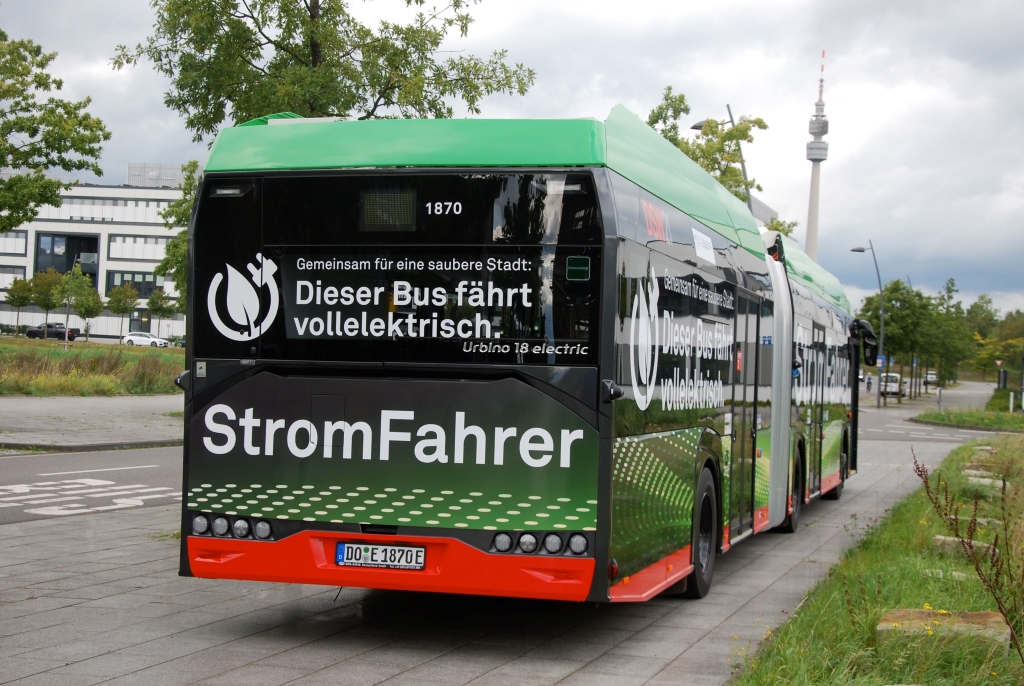
The operating concept
Dortmund has developed an interesting operating concept for its electric articulated buses. They are to be used on a combination of lines 470, 440 and 437 (DSW line 470: Mengede – Oespel, line 440: Oespel – Aplerbeck and line 437: Aplerbeck – Sölde Jasminstrasse). In Oespel and Aplerbeck the line is changed, so the buss run from the Mengede district in the northwest to the Sölde district in the southeast. According to Uli Jaeger, head of DSW 21’s transport department, this has the advantage that as many Dortmund citizens as possible can enjoy the new electric articulated buses. And it is good for the operation if the buss run as much as possible.
The DSW 21 claim that the buses have a range of 300 kilometres. And not only do they run electrically, their heating and air-conditioning systems also operate completely independently of the weather. Recharging only takes place at the depot (Brünninghausen), via pantographs that rise from the bus to the charging station. Recharging on the route is not planned,
For courses that return to the depot in the early evening, the 300 kilometres are perfectly sufficient. But that is not enough for the DSW. “We also want to use the electric buses on the routes that don’t get home until the middle of the night.” For that, however, the range of the buss is not enough. So what to do?
DSW 21 have found a clever solution. When the battery capacity of one of the buses runs out, the driver briefly drives to the Brünninghausen depot, where the buses pass on their long round trip in both directions. Here he stops immediately in the entrance at a “middle platform”, where a freshly charged second battery bus is already waiting opposite for the onward journey. Thus, the passengers change vehicles door to door, and the journey continues. The freshly charged vehicle continues the journey of its brother, which in turn now drives under one of the charging stations on the Brünninghausen farm and is recharged. “All of this,” says Jaeger, “takes less than a minute for the passenger”. And so that a driver does not “overlook” the fact that his bus needs to be recharged, the charging status of each electric bus is monitored by remote diagnosis. And the control centre gives the instruction to change the bus the next time it passes Brünninghausen.
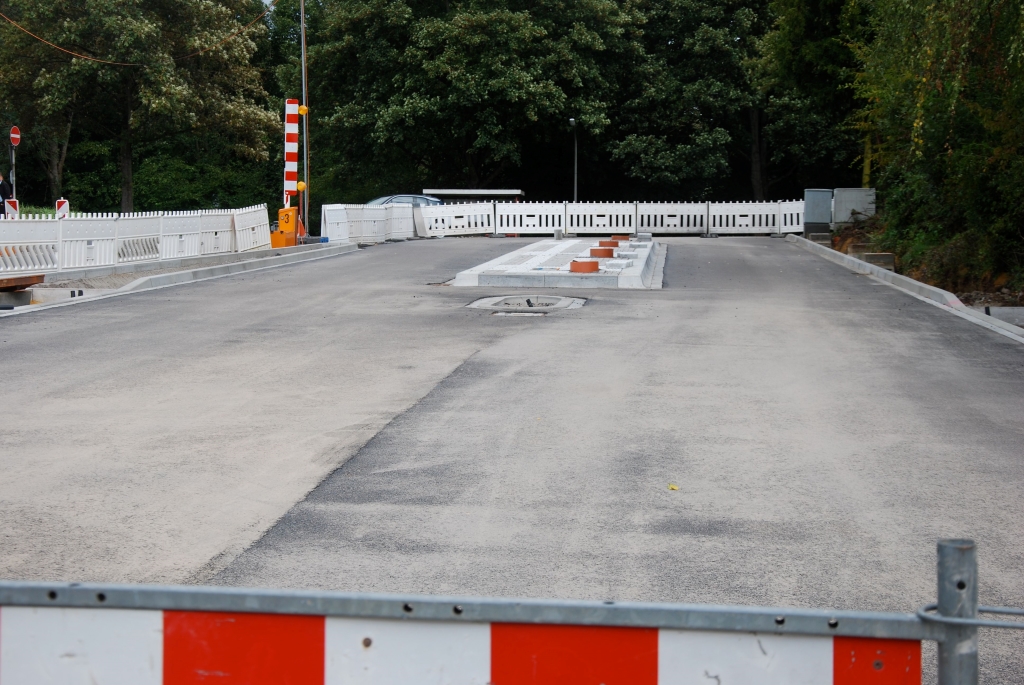
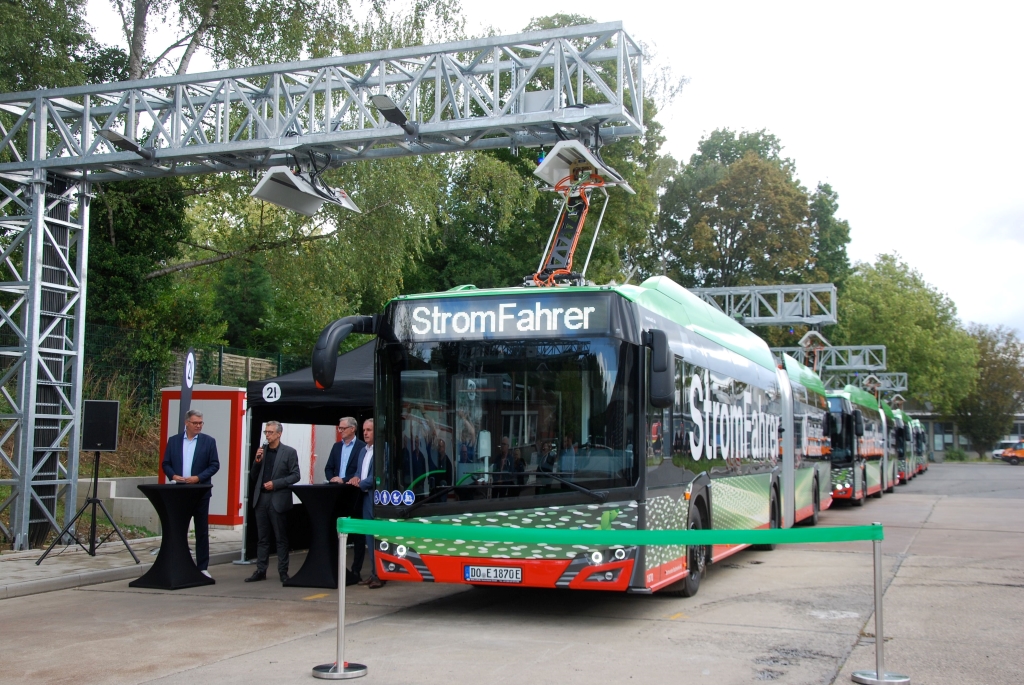
However, the central platform has not yet been completed. That is why DSW does not yet want to let its passengers change buses at the depot, even if this would only happen occasionally. So for the time being, the electric buses will be used differently until the end of the autumn holidays, namely on the lines:
445 (Hörde – Phoenix West – Brünninghausen – University – Technology Centre),
447 (Huckarde – Revierpark – Dorstfeld – University – Hombruch – Lücklemberg – Wellinghofen – Hacheney)
and 450 (Westfalenhallen – Brünninghausen – Kirchhörde – Herdecke Schanze).
According to DSW 21, these lines run directly past or in the vicinity of the Brünninghausen depot and are well suited for the initial scheduled operation of the electric buses due to the mileage achieved on them.
After the North Rhine-Westphalian autumn holidays, however, the “interchange” central platform at the Brünninghausen depot should be completed, and then the originally planned line combination from Mengede to Sölde should also be operated.
The charging infrastructure at the depot
At the Brünninghausen depot, 30 charging points will be available (after completion of all work expected shortly), i.e. one for each bus. They will be distributed over three areas.
Ten fast-charging points with a capacity of 300 kW will be available in the area of the depot entrance from Stockumer Straße. Here the bus batteries can be recharged within two hours. There are eight further charging points in the southern area of the site, with a charging capacity of 150 kW. (Of course, it takes correspondingly longer to fully charge a bus here). And finally, there are twelve charging points in the new bus parking hall. And here, a few hundred metres of cable are still missing to connect these charging stations to the power supply.
The equipment of the buses
The buses have batteries with a capacity of more than 600 kWh. And something else is noticeable: the artificial leather seat or even the seat made of real (recycled) leather is returning in the local public transport vehicles. After Düsseldorf’s Rheinbahn, for example, had such seats installed again a few years ago and Bonn’s SWB recently also opted for recycled leather in the new CAF light rail vehicles, Dortmund’s passengers are now also taking a seat on leather in the new electric buses.
The investment
The purchase of the 30 electric articulated buses costs a total of around 38 million euros. 2 million of this is for the necessary electric connection of the Brünninghausen depot. 13.7 million euros of the total amount are public funds.
